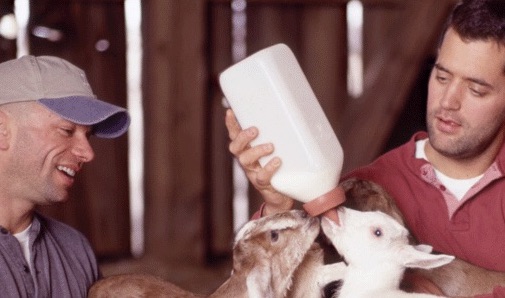
Case Study: FireFly Farms
Protecting Investment with Geeky Spreadsheets
FireFly Farms has been in business since 2000, manufacturing goat cheese after first getting their creamery license in 2002. Their cheese is sold commercially nationwide with concentrated sales in the DC area, and they’ve seen cheese sales of $1.8 million with annual growth as fast as 30-35% year on year, though the rate has settled in around 18% which owner Mike Koch says is “much more comfortable.” FireFly’s mission is twofold: commitment to the art of great cheesemaking, and a focus on economic, social, and environmental sustainability.
You Don’t Know What You Don’t Know
While Mike was actively engaged in the business for the past 15 years, he also had a second job. Then late 2016 he realized the business was working! He’d made substantial financial investments, so he wanted to realize the full potential of return, and also develop an exit strategy. It was time to be all cheese all the time.
Mike had written a proposal to local government in July 2016 as he was thinking about the jump, suggesting how they might help him grow. The proposal was warmly received, but it brought to light that his cost accounting was lacking. Gross margin? Cost per product? What does extended cheese aging do to the margin? These questions put him on the path to Ted LeBow.
Getting a Grip on the Margins
Mike’s work with Ted completely remade the way he thinks about and manages the business. While the data was there, it wasn’t being used or accounted for correctly. Their first step was to categorize and streamline the Chart of Accounts, effectively renovating their P&L so it would report properly. They also significantly enhanced their inventory processes to get more specific and make tracking more accurate and reliable.
It took February and March to remake the COA, but by the second quarter, they were able to look at a product-specific costing analysis that included allocation of raw materials and packaging, as well as labor factors to accurately allocate direct labor costs, and the use of cheese-by-cheese yields (pounds of cheese per gallon of milk). They could then determine floor pricing based on targeted margins and adjustments to cost per product. “We identified 3 pricing issues where products were below the price floor,” Mike said. By the third quarter they produced a 1.5% margin shift.
Creativity vs Analysis
Mike used to think profitability was a “hand-wringing element of surprise” where you don’t know the number until the end, and is now a self-proclaimed “spreadsheet geek” with quarterly reporting on costing per product.
This work highlighted an ongoing conflict in Mike’s life–the balance between fast-paced, creative, sales-focused brainstorming and the much more difficult introversion and analytics. Part of the process was understanding that a creative brainstorm won’t solve every issue. Mike had to dive in with data and be ready to answer Ted’s difficult questions. He found that his geekiness and ability to generate energy to work on his own was actually kind of comforting and could reduce his stress. Instead of relying on optimistic words, it’s math–as Mike says, “Hope is not a strategy.”
Straight Talk with Ted
Mike appreciated the way Ted was easy to understand and spoke plainly to people without Harvard MBAs or CPAs behind their name. They love having Ted to rely on for giving straight answers to tough questions.
Mike would advise someone preparing to work with KTC to “bring their whole self and not hold anything back.” Return the investment that KTC makes fully: “be direct, transparent, vulnerable, and willing to ask the unpolitical questions. Set aside your business owner’s “PR” mentality of faking it until you make it. Let your consultant see all the worries and the ugly parts.” Mike recommends you “be willing to invest a lot of time and put in a lot of work.”
Q4 Confidence
Mike has seen several positive changes in his business since working with KTC. They’re nationally known and have seen a steady increases in revenue. Future plans include doing some bookkeeping work on their successful retail store to take a closer look at its operations and determine whether there are more opportunities for growth there.
Personally, he has an increase in overall confidence for the whole business and no longer worries and questions whether they are profitable. He’s implemented a monthly closing process with scoring, and is entering into 2018 with a real budget and relevant sales projections. “You don’t know what you don’t know. Looking back is incredible,” Mike says. “Meeting Ted… it’s a game changer.”